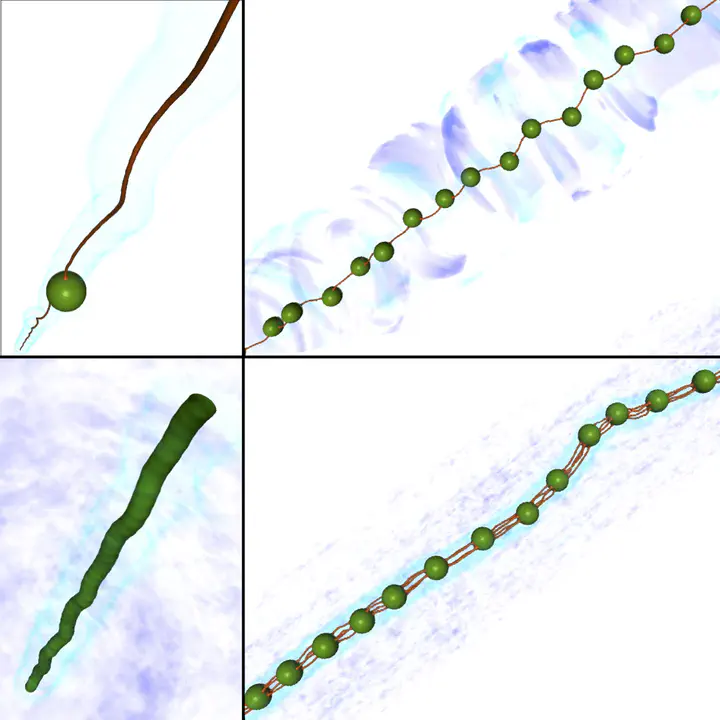How Trapped Particles Interact With Quantum Vortices
New paper published in Physical Review Research
 Particles trapped in a quantum vortices interacting with vortex wave and sound.
Particles trapped in a quantum vortices interacting with vortex wave and sound.
For more than 10 years, quantum vortices have been visualised in superfluid helium by using hydrogen and deuterium ice particles. Their size is of some micrometers that is much larger than the atomic size of the vortex core. Because particles are big and heavy, they interact with the vortices in a complex and yet not fully understood manner.
In this work we study how well such particles sample the movement of quantum vortices. We address how an array of particles trapped in a quantum vortex modifies the dynamics and the excitations of the vortex filament. Such excitations, known as Kelvin waves, have already been observed by imaging particles in superfluid helium. Surprisingly, it has been observed in experiments that particles arrange themselves, once they are trapped in a quantum vortex, in a very regular manner. The figures above on the right, coming from our numerical simulations show a typical configuration
In this work published in Physical Review Research (see article here) we use extensive numerical simulations and develop a theory to show that, regardless the particle mass and size, the large-scale vortex dynamics is well sampled and unperturbed by the particles. Moreover, we discover that the vortex-particle interaction leads to a plethora of new unexpected physics. We build a mathematical analogy of this system with the one of electron in a crystal. This analogy brings together the hydrodynamical description of quantum vortices with solid state physics concepts, and it could lead to a simple classical analogous of a quantum system.